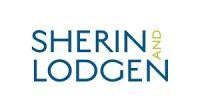Following the enactment of the CARES Act, the Federal Reserve announced establishment of the MainStreet Lending Program (the “MSLP”) on April 9, 2020. Initially, the MSLP created the Main Street New Loan Facility (the “New Loan Facility” or “NLF”) and the Main Street Expanded Loan Facility (the “Expanded LoanFacility” or “ELF”). On April 30, 2020, the Federal Reserve expanded the program with a third facility, the Main Street Priority Loan Facility (the “Priority Loan Facility” or “PLF”). The Federal Reserve will lend to a single Special Purpose Vehicle (the “SPV”) which then uses those funds to purchase participations ineligible loans from eligible lenders.
The three loan facilities subject lenders and borrowers to the same criteria. Loans made under each of the facilities provide practically the same terms: interest rate, maturity date, one-year deferral of principal and interest, and no prepayment penalty.
The differences between the three loan facilities relate chiefly to the maximum amounts that can be borrowed,and restrictions on repayment of a borrower’s other debts. Additionally, while the New Loan Facility and the Priority Loan Facility will finance loans that were originated on or before April 24, 2020, the Expanded LoanFacility will finance additional credit added to loans already in existence on or before April 24, 2020. Becauseborrowers may only participate in one of the facilities, it is important to note the differences and similarities ineach. The chart below may help.
Eligible Borrowers
A borrower under any of the three facilities must meet the following minimum eligibility requirements:
-
Be established prior to March 13, 2020;
-
Be an eligible business under the Small Business Act (“SBA”), except that nonprofit businesses and religious businesses are also considered eligible;
-
Has 15,000 or fewer employees or annual revenues of $5 Billion or less;
-
Is a US business with significant operations and a majority of its employees based in the United States.; and
-
Has not received specific support pursuant to Title IV of the CARES Act (i.e., air travel, air cargocarriers, and businesses critical to national security).
Participation in the Paycheck Protection Program (“PPP”), a separate program under the CARES Act, doesnot render a borrower ineligible for the MSLP.
Note that these requirements constitute the minimum eligibility criteria. Lenders will also do basic underwriting,including an evaluation of Borrowers’ financial health, prior to approving a loan. Borrowers must certify that theyhave a reasonable basis to believe that, as of the date of origination of the loan, and after giving effect to the loan, it has the ability to meet its financial obligations for at least the next 90 days and does not expect to file for bankruptcy during that period. Borrowers must also comply with applicable restrictions in the CARES Act onbuying back company stock (except as required by pre-existing contracts), paying dividends and makingother capital contributions, as well as limitations on executive compensation.
In calculating a Borrower’s employee count, the program looks to the average total number of employees for each pay period during the 12 months prior to loan origination, including any part- time, seasonal, or otherwise employed persons, excluding volunteers and independent contractors. Borrowers should count their own employees and those employed by their affiliates. In calculating annual revenue, a Borrower may choose either (a) its (and its affiliates’) annual “revenue” reported on its 2019 audited financial statements pursuant to GAAP; or (b) its (and its affiliates’) annual receipts for the fiscal year 2019 reported on its 2019 federal tax return.
The MSLP uses the same SBA affiliation rules as the PPP, and may be determined based on (a) common ownership; (b) stock options, convertible securities and agreements to merge; (c) common management; (d) common identity of interest (including common investments and economic dependence); or (e) franchiseagreements. Note however, that unlike under the PPP, the hospitality industry is not exempted from theSBA’s affiliation rules under the MSLP.
Terms of the Loans
The Federal Reserve’s term sheets for the three loan facilities are summarized in the chart below:
|
|
Main Street New Loan Facility |
Main Street Priority Loan Facility |
Main Street Expanded Loan Facility |
|
Term |
4 years |
||
|
Minimum Loan Size |
$500,000 |
$10,000,000 |
|
|
|
New Loan Facility |
Priority Loan Facility |
Expanded Loan Facility |
|
Maximum Loan Size |
The lesser of: (a) $25M, or (b) 4x 2019 adjusted EBITDA less existing outstanding and undrawn available debt 1 |
The lesser of: (a) $25M, or (b) 6x 2019 adjusted EBITDA less existing outstanding and undrawn available debt1. |
The lesser of: (a) $200M, (b) 35% of less existing outstanding and undrawn available debt, or (c) 6x 2019 adjusted EBITDA less existing outstanding and undrawn available debt1. |
|
Participation Amount Retained by Lender |
5% |
15% |
5% |
|
Repayment |
Year 1: 100% principal and interest payments deferred Year 2: 33.33% Year 3: 33.33% Year 4:33.33% (unpaid interest is capitalized) |
Year 1: 100% principal and interest payments deferred Year 2: 15% Year 3: 15% Year 4: 70% (unpaid interest is capitalized) |
|
|
Interest Rate |
LIBOR (1 or 3 month) + 3% |
||
|
Loan Security |
Secured or Unsecured |
Secured or Unsecured (if the underlining loan is secured, then the upsized tranche must also be secured) |
|
|
|
New Loan Facility |
Priority Loan Facility |
Expanded Loan Facility |
|
Priority |
At origination and as long as a NLF loan is outstanding, it cannot be contractually subordinated to any of Borrower’s other loans. |
At origination and as long as the PLF loan is outstanding, it must be senior to or pari passu with all other debt of Borrower (other than mortgage debt). |
At upsizing and as long as the ELF upsized tranche is outstanding, it must be senior to or pari passu with all other debt of Borrower (other than mortgage debt). |
|
|
Borrowers with existing debt (either secured or unsecured) are not prevented from obtaining a subsequent NLF loan, but existing lenders cannot require contractual subordination of the NLF loan. |
Borrowers with existing debt (other than mortgage debt) will be required to make such existing debt subordinate to or on equal footing with the PLF loan. It is unclear in the regulations whether subsequent mortgages may also take priority over a PLF loan similar to existing mortgages. |
Borrowers with existingdebt (other than mortgage debt) will be required to make such existing debt subordinate to or on equal footing with the ELF upsized tranche. As with the PLF, the priority treatment of subsequent mortgages is unclear. |
|
Fees |
Transaction Fee: Lender will pay the SPV 100 basis points of the principal amount of the loan (which the lender may pass through to the Borrower). Origination Fee: Borrower will pay the lender up to 100 basis points of the principal amount of the loan. |
Transaction Fee: Lender will pay the SPV 75 basis points of the principal amount of the upsized tranche (which the lender may pass through to the Borrower). |
|
|
|
|
Origination Fee: Borrower will pay the lender up to 75 basis points of the principal amount of the upsized tranche. |
|
|
Restrictions on Repayment of Other Debt |
Borrower must refrain from using loan proceeds to repay any other of Borrower’s existing loans, unless a payment is mandatory and due. |
Borrower must refrain from using proceeds of eligible loans to repay any other loans, unless a payment is mandatory and due, but may, at the time of origination, refinance existing debt owed to another lender (i.e. not the lender making the Preferred Loan Facility loan). |
Borrower must refrain from using loan proceeds to repay any other of Borrower’s existing loans, unless a payment is mandatory and due. |
|
|
New Loan Facility |
Priority Loan Facility |
Expanded Loan Facility |
|
Restrictions on Existing Lines of Credit |
Borrower must commit not to seek to cancel or reduce any committed lines of credit. |
||
|
Prepayment Penalty |
None |
||
|
Employee Retention |
While the loan (or upsized tranche) is outstanding, Borrower should make commercially reasonable efforts to maintain payroll and retain its employees, in light of its capacities, the economic environment, its available resources, and the business need for labor. Borrowers that have already laid-off or furloughed workers as a result of the disruptions from COVID-19 are still eligible to apply for Main Street loans. |
||
|
Loan Forgiveness |
None |
||
Applying
The loan facilities are not yet currently purchasing eligible loans. Once open, they are to remain open to purchasing eligible loans through September 30, 2020, unless otherwise extended.
Borrowers who wish to apply for a MSLP loan must apply through their local lenders. Eligible lenders areU.S. federally insured depository institutions (including banks, savings associations, and credit unions), U.S. branches or agencies of foreign banks, U.S. bank holding companies, U.S. savings and loan holding companies, U.S. intermediate holding companies of foreign banking organizations, and U.S. subsidiaries of any of the foregoing.
As noted above, lenders will evaluate Borrowers’ financial health prior to approving a loan.
Items to Consider
The MSLP loan amounts and rates are significantly less favorable than those offered by the PPP and the Economic Injury Disaster Loan (“EIDL”) programs. And, unlike the PPP, they cannot be forgiven. However, loans made under the EIDL program or the MSLP may be more useful to borrowers facing dire straits, because they can be used more freely than PPP loans (for instance, that 75% of the proceeds of which must be used on payroll costs). Additionally, careful consideration is needed to determine which MSLP loan facility is best suited for the Borrower.
1 According to the Federal Reserve’s Main Street Lending Program Frequently Asked Questions (“FAQs”), existing outstanding and undrawn available debt includes “all amounts borrowed under any loan facility, including unsecured or secured loans from any bank, non-bank financial institution, or private lender, as well as any publicly issued bonds or private placement facilities” and “all unused commitments under any loan facility, excluding (1) any undrawn commitment that serves as a backup line for commercial paper issuance, (2) any undrawn commitment that is used to finance receivables (including seasonal financing of inventory), (3) any undrawn commitment that cannot be drawn without additional collateral, (4) any undrawn commitment that is no longer available due to change in circumstance. Existing outstanding and undrawn available debt should be calculated as of the date of the loan application.” See G-2 of the FAQs.




 />i
/>i


